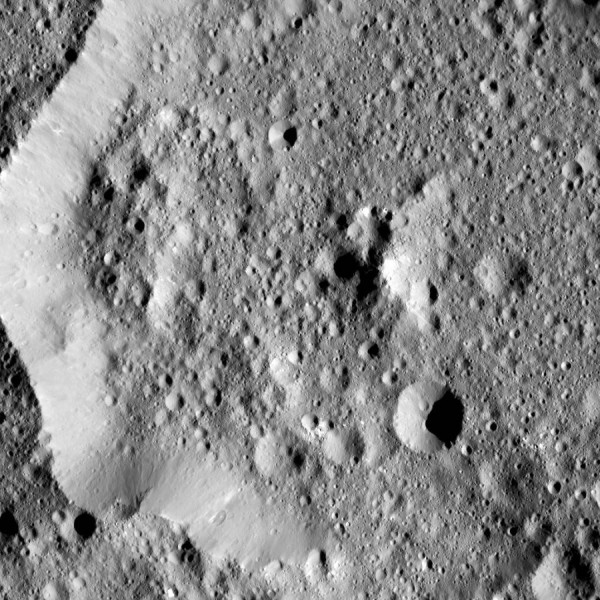By Ana Verayo, | February 19, 2017

Ernutet Crater measures about 32 miles (52 kilometers) in diameter and is located in the northern hemisphere of Ceres. (NASA/JPL-Caltech/UCLA/MPS/DLR/IDA)
Scientists have detected organic molecules on the dwarf planet Ceres, which is located in the major asteroid belt between Mars and Jupiter. This discovery also marks the first detection of unambiguous molecules on an asteroid.
A team of planetary scientists from the National Institute of Astrophysics in Rome utilized data obtained from NASA's Dawn spacecraft, which is currently orbiting Ceres. "We are seeing a lot of interesting chemistry on Ceres and this is the first time we saw clear organic signatures on an extraterrestrial body," the lead author of the study, Maria Cristina De Sanctis of the National Institute of Astrophysics, said.
Like Us on Facebook
Using Dawn's onboard visible and infrared light spectrometer, the probe was able to detect these organic molecules even from an altitude. More specifically, Dawn was able to detect them from a large crater located in the northern hemisphere of Ceres known as the Ernutet Crater.
Scientists discovered a distinct signature of organic molecules with methyl and methylene groups that are chemical components of carbon and hydrogen atoms which are formed in groups. In addition, the molecules on the surface of Ceres are most likely asphaltite or similar to tar which are considered as organics.
Even if these organic molecules were discovered inside a crater, the team believes that these molecules formed within the dwarf planet and were not transported from an asteroid that created this impact crater on Ceres. More importantly, organic molecules on Ceres are of the delicate nature, and an asteroid impact would have destroyed them instantly, which means that they were made after this impact.
Organic does not necessarily mean the existence of life, but chemists use this when a material possesses some carbon atoms in it. These organic molecules may provide important clues about how asteroids would have been carriers of the building blocks of life in the solar system and beyond.
Scientists have long suggested that microbial life on Earth was triggered when the planet was bombarded by asteroids. This would also mean that this event formed water and developed life on Earth. This also makes Ceres a likely carrier of the building blocks of life.
Apart from this, Ceres is also similar to Saturn's moon Enceladus, which possesses active geysers ejecting water ice and a hidden, global ocean under its surface. If proven to exist, this global ocean could potentially host life. This new study was published in the journal Science.
-
Use of Coronavirus Pandemic Drones Raises Privacy Concerns: Drones Spread Fear, Local Officials Say

-
Coronavirus Hampers The Delivery Of Lockheed Martin F-35 Stealth Fighters For 2020

-
Instagram Speeds Up Plans to Add Account Memorialization Feature Due to COVID-19 Deaths

-
NASA: Perseverance Plans to Bring 'Mars Rock' to Earth in 2031

-
600 Dead And 3,000 In The Hospital as Iranians Believed Drinking High-Concentrations of Alcohol Can Cure The Coronavirus

-
600 Dead And 3,000 In The Hospital as Iranians Believed Drinking High-Concentrations of Alcohol Can Cure The Coronavirus

-
COVID-19: Doctors, Nurses Use Virtual Reality to Learn New Skills in Treating Coronavirus Patients







